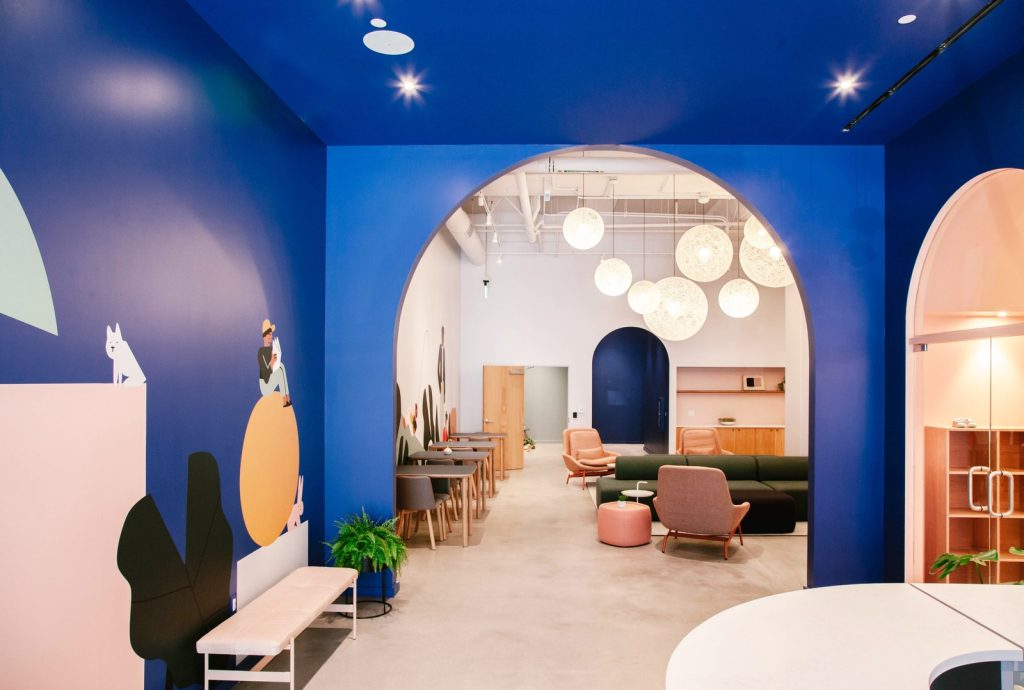Kid’s Zone Interior Design specializes in creating vibrant and engaging spaces for children that foster creativity and learning. From colorful murals and interactive play areas to functional storage solutions, our team of experts is dedicated to designing environments that stimulate imagination and promote positive development.
With a keen understanding of child psychology and an eye for innovative design, we create customized interiors that cater to the unique needs and preferences of each child. Whether it’s designing a playful bedroom, a whimsical playroom, or a stimulating classroom, Kid’s Zone Interior Design strives to create spaces that inspire joy, exploration, and growth for children of all ages.
The Importance Of Kid’s Zone Interior Design
The importance of kid’s zone interior design cannot be overstated. When it comes to creating a stimulating environment for children, a well-designed space can have a significant impact on their development. By incorporating vibrant colors, interactive elements, and age-appropriate furniture and decor, a kid’s zone can engage their senses and promote learning and exploration. Additionally, a thoughtfully designed space can enhance creativity and imagination. By providing different play areas, such as a reading nook, art corner, or pretend play zone, children can engage in a variety of activities that stimulate their imagination and promote cognitive development. Kid’s zone interior design matters because it helps create an environment that fosters growth and learning for children, allowing them to thrive physically, emotionally, and intellectually.
Elements Of A Playful And Imaginative Kid’s Zone
In a Kid’s Zone interior design, the elements of colors and patterns play a vital role in creating a playful and imaginative space. Vibrant and energetic colors like red, yellow, and blue can stimulate a child’s creativity and imagination. Incorporating interesting patterns, such as polka dots, stripes, or playful prints, can add a fun and lively touch to the space.
The furniture and layout of a Kid’s Zone should be designed keeping in mind the functionality and safety of the child. Using child-sized furniture, such as small chairs and tables, can make the space more accessible and comfortable for them. The layout should provide enough room for the child to move around freely and actively engage in play activities.
Lighting and ambiance also contribute to the overall atmosphere of a Kid’s Zone. Bright and well-lit spaces can enhance the child’s mood and create a playful environment. Additionally, incorporating soft and warm lighting, such as string lights or night lights, can create a cozy and calming ambiance.
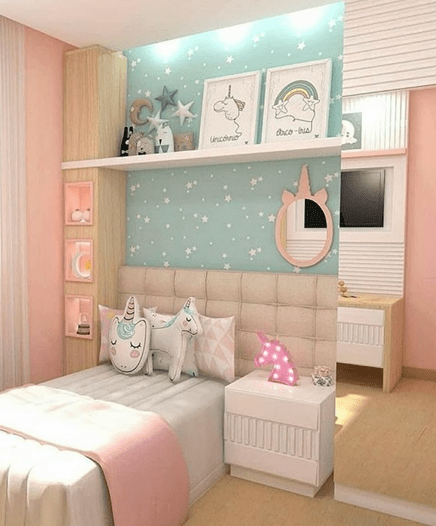
Tips For Designing A Kid’s Zone Interior
When designing a kid’s zone interior, it is important to create a space that is both functional and enjoyable. Incorporating fun and interactive features can help stimulate a child’s imagination and keep them engaged. Consider adding elements such as a chalkboard wall, interactive play panels, or a reading nook with cozy cushions. Creating different zones for activities can help organize the space and make it easier for children to navigate and play. Designate areas for playing, reading, and crafting, and use furniture and decor to clearly define each zone. Storage solutions are essential in a kid’s zone, as it helps keep the space tidy and allows for easy access to toys and games. Utilize shelves, baskets, and toy boxes to keep everything organized and within reach. Overall, when designing a kid’s zone interior, focus on creating a space that is not only visually appealing but also functional and enjoyable for children.
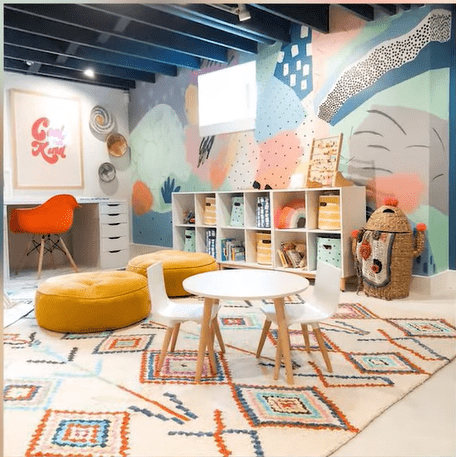
Credit: houseandhome.com
Safety Considerations For Kid’s Zone Interior Design
When designing the interior of a kid’s zone, it is crucial to select materials that prioritize the safety of children. Opt for non-toxic and hypoallergenic materials to reduce the risk of allergies and other health issues. Choose paints free from harmful chemicals, such as volatile organic compounds (VOCs). Consider using natural and organic fabrics for upholstery and curtains to minimize exposure to harmful substances.
Emphasize safety measures throughout the design of the space. Install childproof locks on cabinets and drawers to prevent accidents and injuries. Secure heavy furniture to the walls to prevent tipping. Place corner protectors on furniture to prevent bumps and bruises. Additionally, ensure adequate lighting and clear pathways to reduce the risk of trips and falls.
Identify and address potential hazards in the kid’s zone. Keep small objects and choking hazards out of reach. Avoid using sharp-edged furniture and decorative items. Use cordless window treatments to prevent accidental strangulation. Consider installing safety gates to restrict access to potentially dangerous areas. Regularly inspect the space to identify and fix any potential safety concerns.
Popular Themes And Ideas For Kid’s Zone Interior Design
When designing a kid’s zone interior, it’s important to create a captivating and imaginative space that fosters creativity and play. One popular theme is to create a fantasy world, where kids can feel like they are in a fairytale setting. This can be achieved by using colorful and whimsical décor, such as enchanted forests, castles, and magical creatures. Another popular theme is an outer space adventure, where kids can embark on a journey to the stars. This can be achieved by using celestial prints, glow-in-the-dark elements, and space-themed furniture. For those who prefer an underwater paradise theme, exploring the deep sea can be a great option. Using shades of blue, nautical elements, and sea creature motifs can create a calming and immersive environment. With these popular themes and ideas, you can transform any kid’s zone into a magical and engaging space.
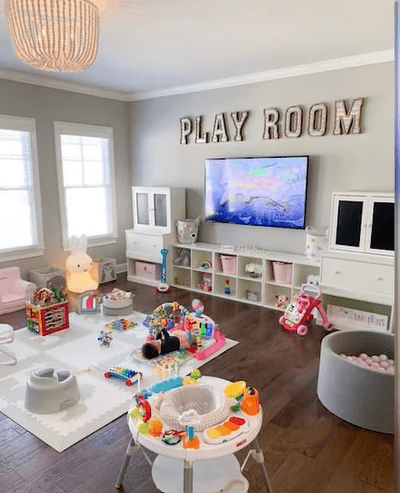
Diy Projects For Kid’s Zone Interior Design
Discover creative and fun DIY projects for designing your kid’s zone interior. Create a unique and captivating space for your children without breaking the bank. Unleash your creativity and make their dreams come true.
| Subheading | Description |
|---|---|
| Creating a Chalkboard Wall | One exciting and practical DIY project for a kid’s zone is creating a chalkboard wall. This allows kids to unleash their creativity and explore their artistic side. Simply use chalkboard paint for a fun, easily washable surface. Remember to use bright and vibrant colored chalk to make the wall visually appealing. |
| Building a Treehouse Reading Nook | Another fantastic project for a kid’s zone is building a treehouse reading nook. This creates a cozy and captivating space where children can indulge in their love for books and storytelling. Choose a sturdy tree, design a safe and comfortable seating area, and don’t forget to add some shelves for book storage. |
| Designing a DIY Sensory Play Area | For a sensory-rich play area, designing a DIY sensory play area is a great idea. Include elements like textured surfaces, colorful balls, sensory bins with different materials, and interactive wall panels. These elements stimulate the senses and provide endless hours of exploration and fun for the little ones. |
Incorporating Learning And Educational Elements In Kid’s Zone Design
When designing a kid’s zone interior, it’s important to incorporate learning and educational elements to create a stimulating environment. Montessori-inspired design principles can be a great starting point. The emphasis on order, simplicity, and accessibility not only promotes independence but also encourages exploration and learning. STEM (Science, Technology, Engineering, and Mathematics) exploration can be integrated by incorporating hands-on activities, interactive displays, and age-appropriate experiments. Creating designated spaces for reading and integrating books throughout the design can foster a love for reading and enhance literacy skills. Including comfortable seating, cozy reading nooks, and a variety of age-appropriate books will make reading spaces inviting and accessible. By combining these elements, a kid’s zone interior design can not only be visually appealing but also help children develop important cognitive, social, and academic skills.
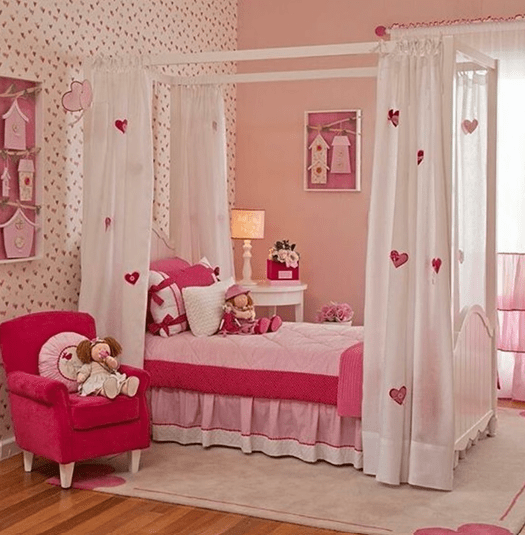
Personalizing A Kid’s Zone Interior Design
One of the key factors in personalizing a kid’s zone interior design is incorporating the child’s interests and hobbies. By including elements that reflect their passion and activities, the space becomes truly unique to them. Whether it’s a favorite sport, hobby, or even a specific theme, such as space or princesses, integrating these aspects into the room can make it feel special and personal.
Another way to personalize a kid’s zone interior design is by creating a display wall for art and achievements. This provides a designated area for showcasing their artwork, certificates, and awards, allowing them to feel a sense of pride and accomplishment.
Furthermore, customizing the space to reflect the child’s personality is essential. This can be achieved through the choice of colors, furniture, and accessories. Whether it’s a vibrant and playful theme or a more calming and serene atmosphere, the design should align with the child’s preferences and temperament.
Maintenance And Upkeep Of A Kid’s Zone Interior
The maintenance and upkeep of a kid’s zone interior is essential to ensure a safe and enjoyable environment for children. Keeping the space clean and organized is the first step in maintaining a healthy atmosphere. Regularly cleaning and sanitizing the surfaces, toys, and furniture will prevent the spread of germs and maintain a hygienic space.
Organizing the space is also important to make it easy for children to find and put away their belongings. Use storage bins, shelves, and labels to keep toys, books, and art supplies in designated areas. Encourage children to participate in the cleaning and organizing process to teach them responsibility.
As children grow, it is necessary to update the design of the kid’s zone interior. Consider age-appropriate decor and furnishings that reflect their changing interests and preferences. Incorporate adjustable elements such as height-adjustable tables and chairs to accommodate their growth.
Inevitably, furniture and equipment may require repairing and maintenance over time. Regularly check for any loose screws, broken parts, or damaged surfaces and repair or replace them as needed. It is also essential to follow any manufacturer’s instructions for maintaining the furniture and equipment to ensure their longevity.
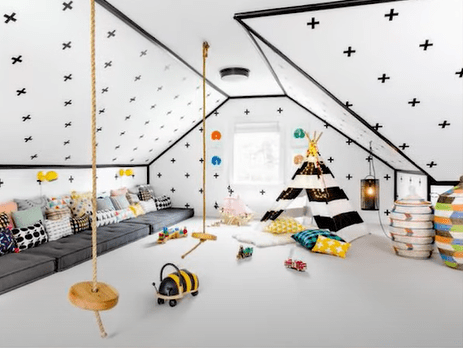
Frequently Asked Questions On Kid’s Zone Interior Design
What Are Some Popular Themes For Kid’s Zone Interior Design?
Popular themes for Kid’s Zone interior design include nature, space, underwater, superheroes, princesses, and jungle. These themes create an engaging and imaginative environment for children, stimulating their creativity and making their space more fun and appealing.
How Can I Optimize The Storage Space In A Kid’s Zone?
To optimize storage space in a Kid’s Zone, focus on using multifunctional furniture, like beds with built-in drawers or shelves. Utilize vertical storage solutions, such as wall-mounted shelves or hanging organizers. Additionally, declutter regularly and create designated storage areas for different toys and items.
How Can I Create A Safe Environment In A Kid’s Zone?
Creating a safe environment in a Kid’s Zone involves securing furniture to walls to prevent tipping, using safety gates for stairs, and installing outlet covers. Choose non-toxic materials for furniture, flooring, and paint. Ensure cords and small objects are out of reach, and place soft padding on sharp edges.
How Can I Incorporate Educational Elements Into A Kid’s Zone Design?
To incorporate educational elements into a Kid’s Zone design, include interactive learning tools like a chalkboard wall, educational posters, or alphabet and number puzzles. Use colorful and engaging artwork with educational themes. Arrange books and learning materials in accessible and organized shelves.
Conclusion
Designing a kid’s zone interior requires creativity, practicality, and a deep understanding of what children love. By incorporating playful elements, vibrant colors, and functional furniture, you can create a space that nurtures their imagination and enhances their development. Remember to prioritize safety features and to maintain a clutter-free environment.
With a well-designed kid’s zone, you can create a space where children can learn, play, and thrive.
